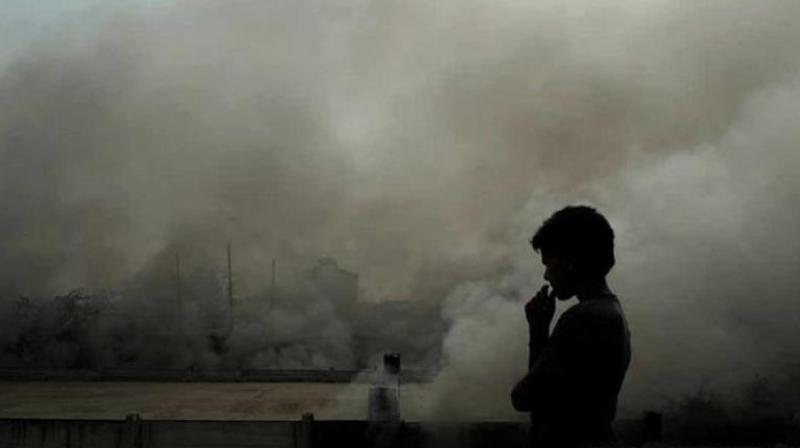Cities in south India are some of the cleanest in the country when it comes to breathable air, but they still suffer from some influence of winter inversion and, resultantly, elevated pollution levels. The levels increase despite the geographical advantages and favorable meteorology due to the region’s proximity to the sea and improved ventilation – finds a new 2019-2021 analysis of winter air quality in India’s south, done by Centre for Science and Environment (CSE).
In 2020, the annual average levels of PM2.5 had a downward tilt in this region, but in 2021, they have risen in most cities, finds the CSE analysis.
“However, unlike states in other regions of the country, the air quality gains are not completely lost. In most cities, the levels of 2021 are still lower than in 2019. This signals towards early preventive action to prevent further worsening in the coming years. This requires urgent scaling up across all sectors to arrest the trend in this region,” says Anumita Roychowdhury, executive director, research and advocacy, CSE.
“Even though real time air quality monitoring has begun to expand in these states to provide more up-to-date information on air quality, there are serious concerns around missing data and gaps that makes proper risk assessment difficult. In some stations of Karnataka, Hyderabad and Tamil Nadu, data availability is so low that the trend cannot be assessed. Quality control of data is necessary,” says Avikal Somvanshi, programme manager, Urban Data Analytics Lab at CSE.
This is evident from the new analysis of real time pollution data as part of the air quality tracker initiative of the Urban Data Analytics Lab of CSE. The objective of this new analysis is to understand the trend and magnitude of pollution in different regions that have real time air quality monitoring systems.
This is an assessment of annual and seasonal trends in PM2.5 concentration for the period January 1, 2019 to January 9, 2022. This analysis is based on the real time data available from the current working air quality monitoring stations. A huge volume of data points have been cleaned and data gaps have been addressed based on USEPA (United States Environmental Protection Agency) methods for this analysis.
Among all the regions, cities of south India have shown least of a rebound and a rising trend once again in 2021 after a significant drop due to the pandemic lockdowns of 2020. But there is still a rebound and it should be seen as a warning signal.
Twenty-two cities have adequate data for both 2020 and 2021 for annual average computation — 16 of these cities show an increase in their annual PM2.5 averages, while six show further improvement. Kochi has registered doubling of its annual PM2.5 average between 2020 and 2021. Cities that show improvement are Chennai, Kalaburagi, Chikkaballapur, Vijaypura, Chikkmangaluru and Kozhikode.
The industrial town of Gummidipoondi near Chennai in Tamil Nadu had the most polluted air in the region with 2021 average at 46 ug/m3. This is followed by Visakhapatnam and Hyderabad with 2021 annual average of PM2.5 at 44 ug/m3 and 41 ug/m3, respectively. In contrast, all other cities in the southern region have met the annual standard.
Hyderabad with 98 days of bad air (AQI of moderately polluted or worse) is the city with the most unhealthy days in the southern states. It is closely followed by Andhra cities — Visakhapatnam with 86 days, Rajamahendravaram with 68 days, and Amravati with 66 days of bad air. Smaller industrial towns of Karnataka namely Gadag and Kalaburagi also report significant bad air days; in fact, the AQI in these cities can cross into a very poor category, but due to the massive amount of missing data it is unclear how long these bad air episodes actually last. Gummidipoondi has the most bad air days in Tamil Nadu, and Kollam shows the same results in Kerela.
Bad air days begin to build up around the end of December in the cities of south Indian states and tend to increase till end of March. Hyderabad and cities in Andhra Pradesh show more pronounced impact of winter pollution compared to other cities of the region.
The industrial town of Gummidipoondi near Chennai in Tamil Nadu had the most polluted air in the region with 2021 average at 46 ug/m3. This is followed by Visakhapatnam and Hyderabad with 2021 annual average of PM2.5 at 44 ug/m3 and 41 ug/m3, respectively. In contrast, all other cities in the southern region have met the annual standard.
Says the CSE analysis: “States in southern India have a unique locational advantage, with the sea and well-ventilated atmosphere and a more moderate climate that prevents pollution build-up during winter like it happens in north India. But this region is at the risk of losing the air quality gains of pandemic, though it has not yet reached the pre-pandemic levels. The doubling of pollution during winter also indicates high local pollution and exposure that normally is not well captured in the annual average trends. This indicates the need for urgent action across all sectors to control pollution from vehicles, industry, power plants, waste burning, construction, and solid fuel use in households in all the states to meet the clean air standards throughout the year.”



